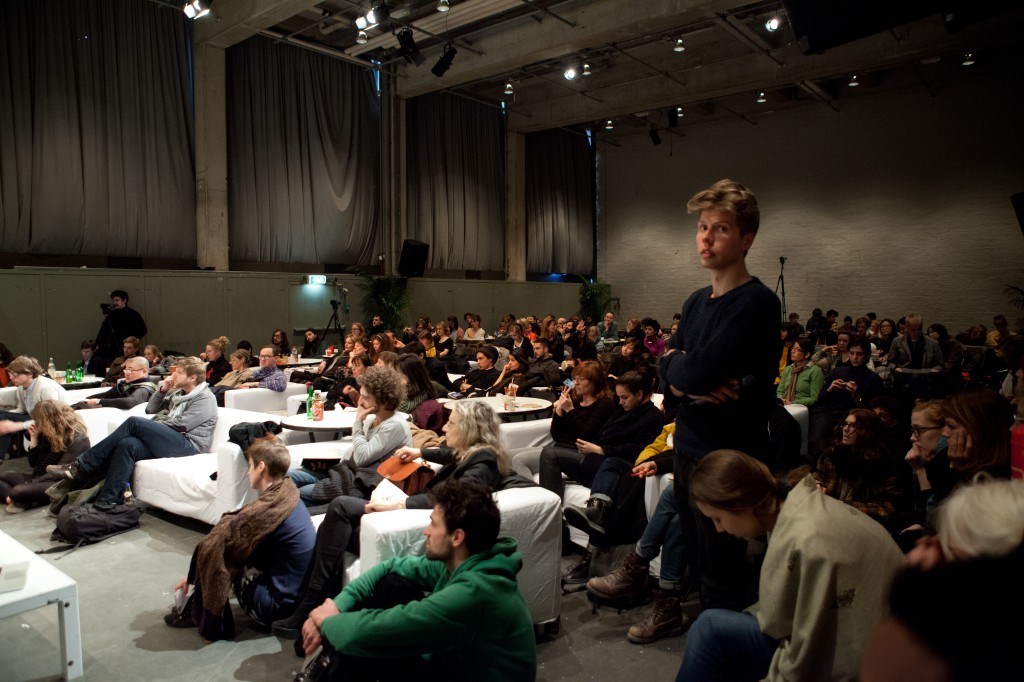
Where are we going Walt Whitman?
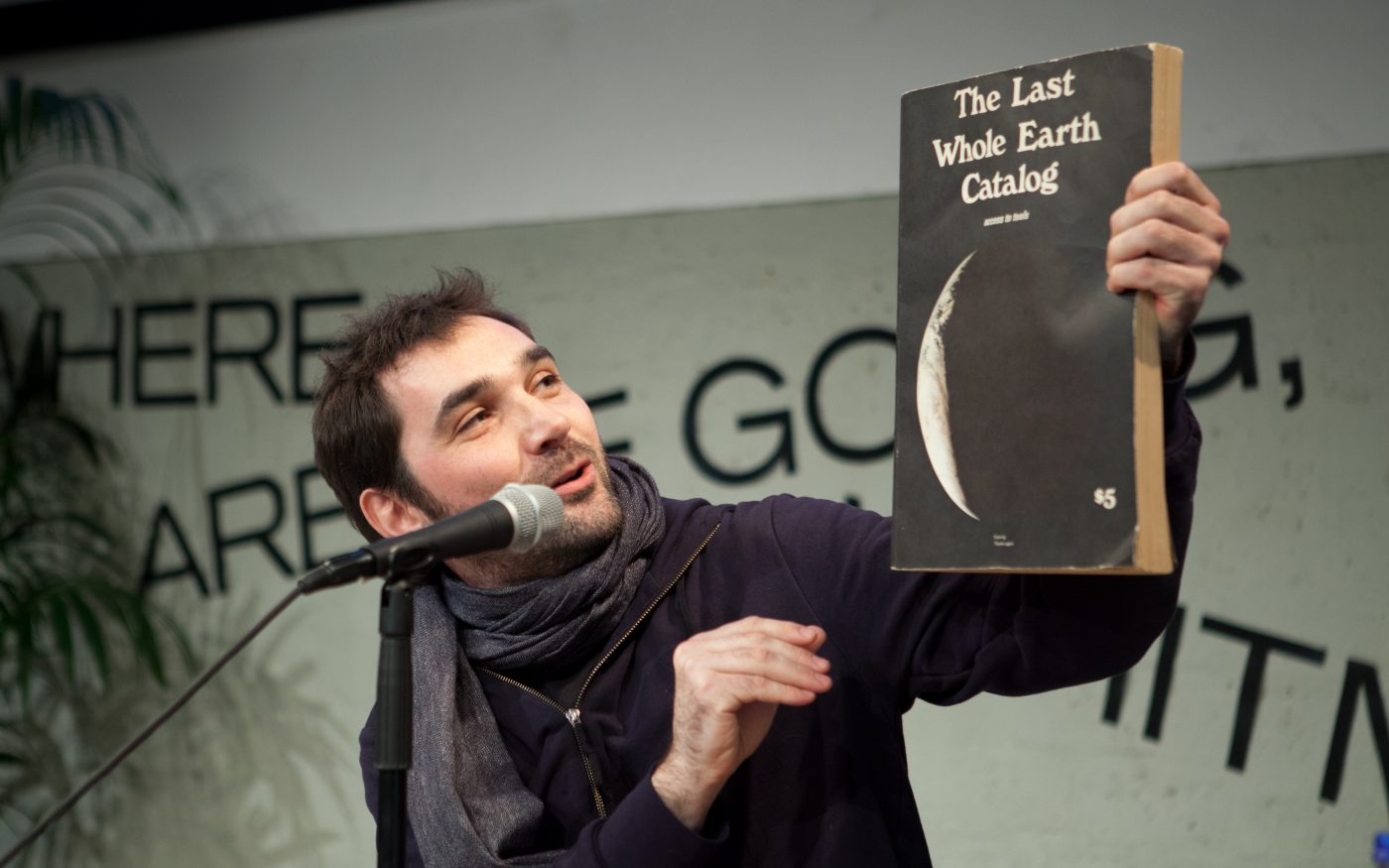
The basement of the Gerrit Rietveld Academie is absolutely packed. It is the first day of the conference WHERE ARE WE GOING, WALT WHITMAN?, part of Studium Generale. Anselm Franke curated a day of insights into outer-space photography, counterculture, psychoanalysis, animism, and the relation between hairballs and earthquakes.
The 19th century American poet Walt Whitman advocated artists should let themselves be inspired directly by the sensuous, natural world around them. But that was before the advance of digital imagery. Taking his advice now would yield a whole different outcome, as became abundantly clear at the Studium Generale of the Gerrit Rietveld Academie asking the question: Where are we going Walt Whitman?
Anselm Franke, director of the Visual Art Department at the Haus der Kulturen der Welt (HKW) Berlin, and curator of the 2012 Taipei Biennial, asks whether we have entered the ‘anthropocene’, new geological epoch in which technological interventions have fundamentally altered the materiality of the earth, and our sensuous relation to it.
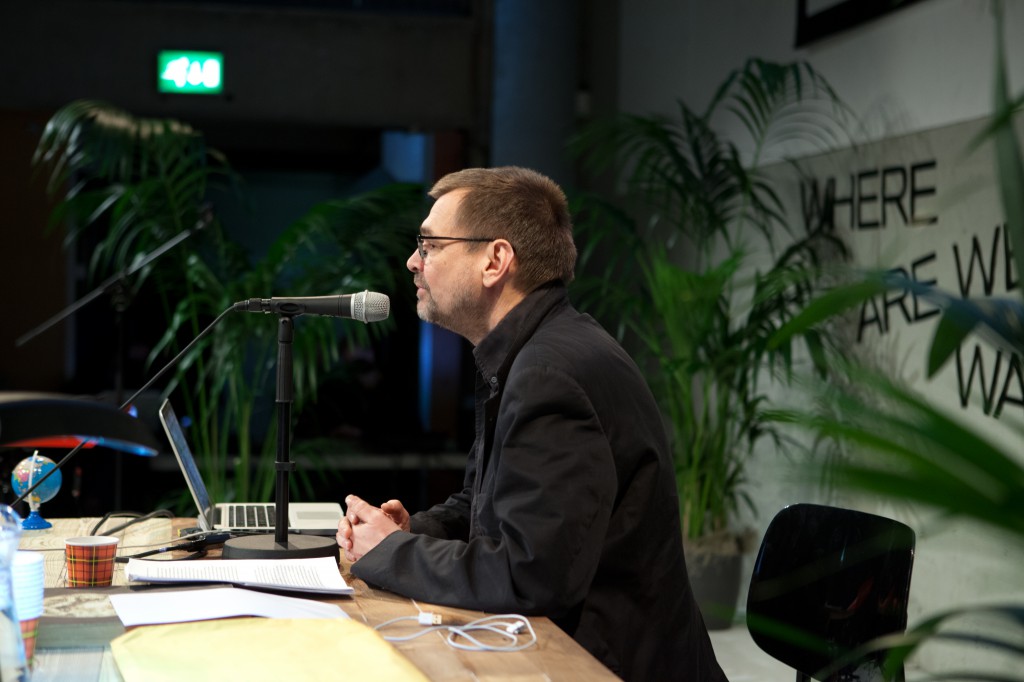
Franke traces our steps to the space race, yielding the first image of the world from outer space. The ‘blue marble’ appeared on the back of Stuart Brand’s 1968 The Whole Earth Catalog, a counterculture manifesto that forms the centerpiece of his forthcoming exhibition The Whole Earth, co-curated with Diedrich Diederichsen. According to Franke the image is a ‘universal icon of our age’ as it both represents technological advance, and embodies social and political strife; under threat of nuclear war, the image of a borderless and vulnerable planet raised the voices of humanitarians, pacifists and environmentalists in the 1960s.
According to pop theorist Diedrich Diederichsen this notion of a unified human race was notably heralded the 1960s music scene. For example, the blue marble image featured on the cover of the New Blues lp, an amalgam of r&b, pop, and African American and British blues. Diederichsen rightly questions whether this musical unison was indeed rooted in ideology, or a display of plain ignorance at a time of apartheid and racial segregation. Fact remains that counterculture adopted a product of technological advance to question the consequences of this very same development.
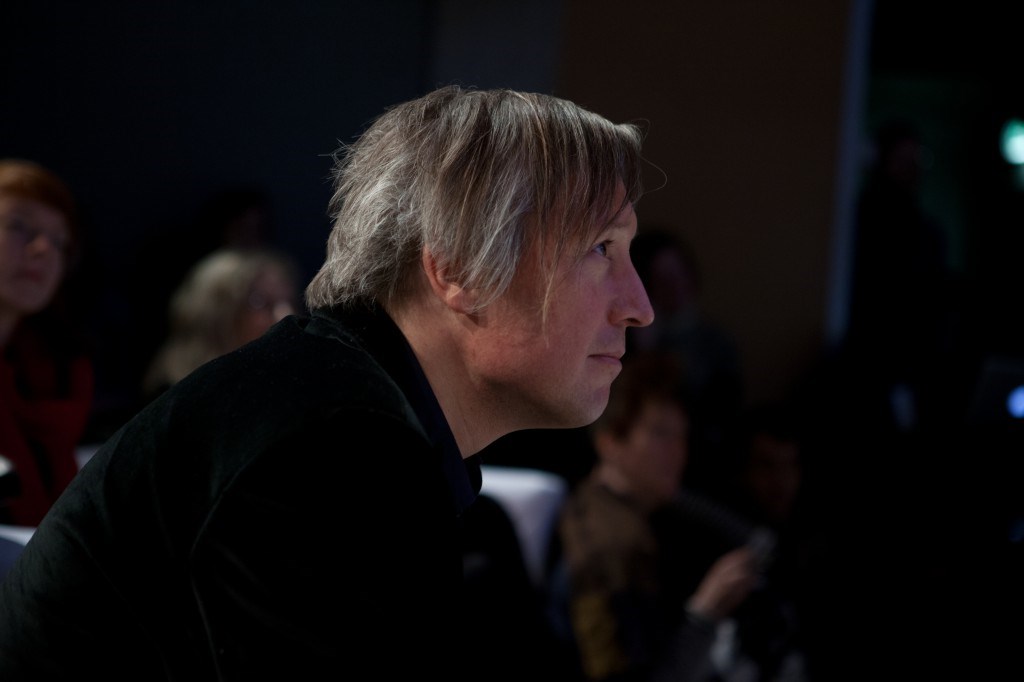
For philosopher Erich Hörl, the image of a borderless world is also iconic for the dematerialization of our modes of (digital) communication and observation. Whereas ecology used to be associated with unscarred nature, the pure, and the non-mechanical, this notion is now obsolete. Hörl proposed a ‘general ecology’, which does not try to negate human intervention in the natural world, but instead analyzes the interaction between humans, technology, and the physical world.
It would not be the Gerrit Rietveld Academie if this statement weren’t put to artistic practice. A welcome pendant to the overload of terms and theory is the online Ecosophical Roadmap: an ongoing encyclopedic exercise accumulating (visual) footage that inspired the speakers. (Ecosophical Roadmap) I dare say this experiment is the only contribution to the Studium Generale that practices what it preaches: it actually embodies our way of interacting with the material world, mediated through technology and immaterial digits.
The map features Angela Melitopoulos’ Assemblages; a collage of video footage of psychoanalytical studies from the 1970s. We see an autistic boy flirting with a statue, and a mute teenager engaging with a water stream. Melitopoulos analyses the unusual interaction with their surroundings in the context of tribal animism that holds objects to have souls. Her conclusion: we should not distinguish between nature, culture and the human psyche, but regard all three as an interdependent ‘ecology of the mind.’ Assemblages is shown in the ongoing exhibition Animism, which started in Antwerp and has since been developed and shown in Bern, Vienna, Berlin, New York, and Shenzen (upcoming).
Curator Flora Lysen revisited the 1976 flotation tank of neuroscientist John Lilly, a soundproof, dark water tank depriving his subjects of all external stimula. The loss of contact with the physical world caused hallucinations, later enhanced by Lilly with doses of LSD. Yet even this most unworldly experience was inevitably translated back to the realm of the sensory; Jordan Belson visualized the psychedelic unconscious of an LSD trip in videos like Allures (1961) and Samadhi (1967).
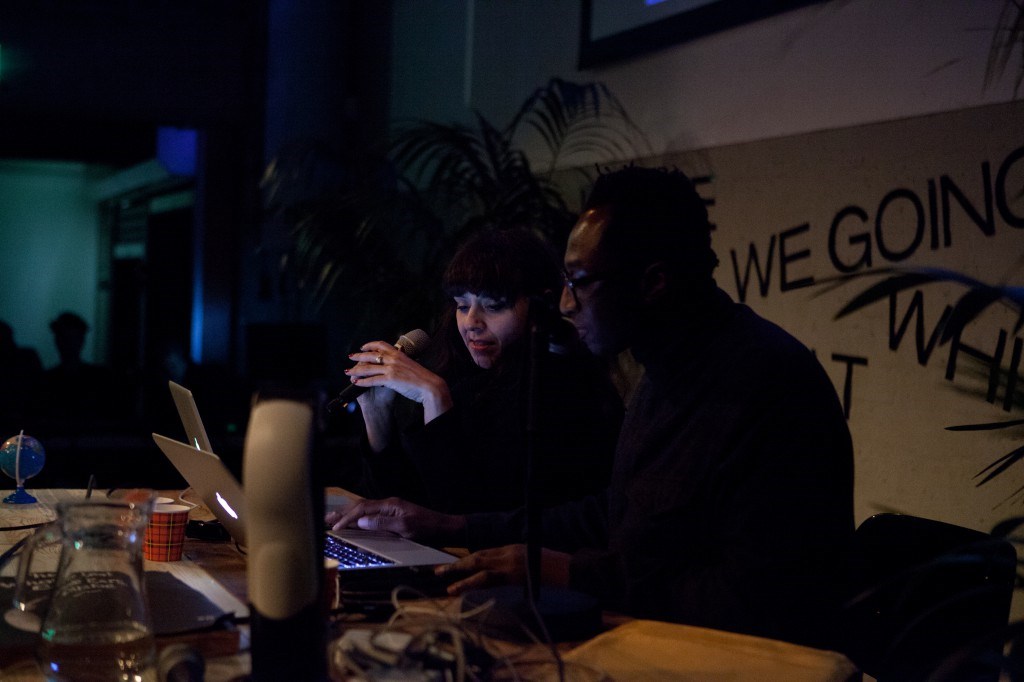
A refreshingly contemporary case study of psychological reactions to a changing physical environment was provided by artist collective The Otolith Group. They photographed the urban ecology of underground parking lots in Los Angeles. A slide show paired the images with photographs of the Joshua Tree Desert, all the while playing a radio interview with Charlotte King, known for her prediction of the Mt. St. Helens volcanic eruption in 1980 (we are assured that pains in the right knee are a precursor for earthquakes in Columbia, whilst chest pains, combined with fur ball-vomiting cats are an indication of tectonic rumbling in Japan). For the Otolith Group, parking lots are essentially not much different from tectonic plates: they are unconscious but ever-present underground systems.
For me, the looming question during the whole day was: where does politics come in? It was not until the visuals of Armin Linke that issues of responsibility were raised. Linke’s photographs politicize the large-scale technological mediation between humans and nature such as the Three Gorges Dam in China, and nuclear power plants all over the world. The initial question WHERE ARE WE GOING, WALT WHITMAN? was mostly approached with an analysis of where we are coming from. Armin Linke was the first contributor to make a serious attempt at answering the uncomfortable question at stake.
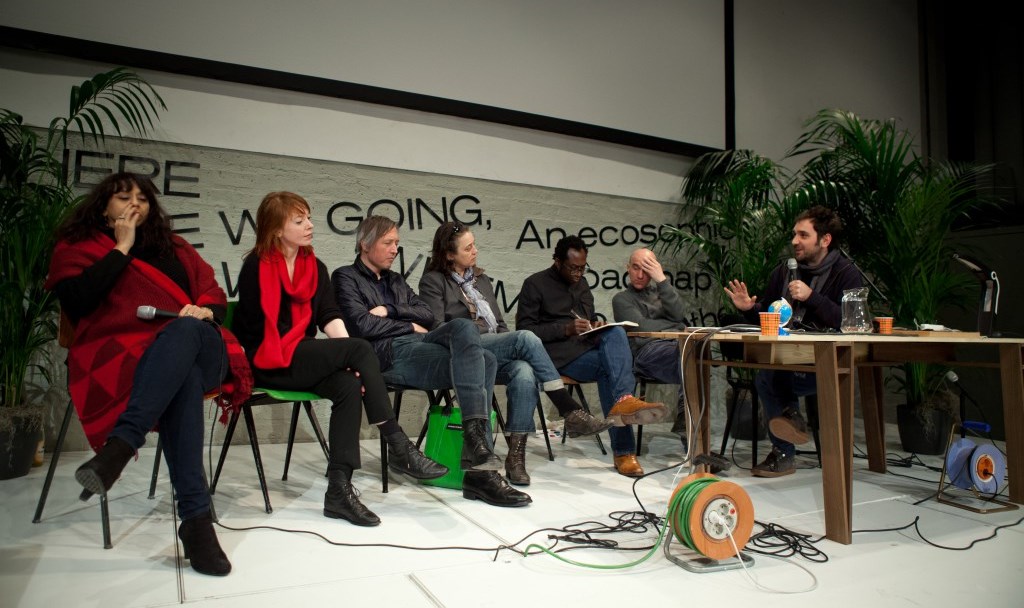
WHERE ARE WE GOING, WALT WHITMAN?
An ecosophical roadmap for artists and other futurists
First Day: Blue Marble (<a href=""Other”>http://wherearewegoingwaltwhitman.rietveldacademie.nl/””>Other days)
Gerrit Rietveld Academie
12 March 2013
Images by Malthe Stigaard, from the website of the Gerrit Rietveld Academie
CONTRIBUTORS’ BIOGRAPHIES
Anselm Franke (Berlin) is a curator and writer.
Diedrich Diederichsen (Berlin / Wien) Critic, writer, cultural theorist and curator
Erich Hörl (Bochum) Erich Hörl is a philosopher and cultural theorist. He is a professor for Media Philosophy in Bochum.
Armin Linke (Berlin) Armin Linke is a photographer and filmmaker. He is a professor at the HfG ( Staatliche Hochschule fur Gestaltung)Karlsruhe.
Flora Lysen (Amsterdam) Flora Lysen is an art historian and curator based in Amsterdam.
The Otolith Group (London) – is an artist collective founded by Anjalika Sagar and Kodwo Eshun in 2002 that integrates art practice with a distinctive public platform.
Angela Melitopoulos (Berlin) Angela Melitopoulos is a filmmaker, artist and writer.
Hinde Haest


